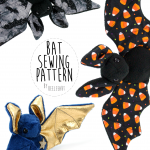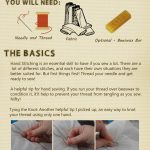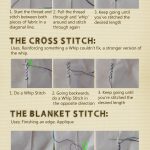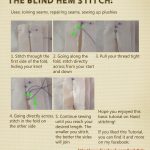Tag: sewing
Untitled
The bat sewing pattern is now available :)
(And just as a note, most of the fabric for my bats came from Joann Fabric if you’d like to purchase something similar)
You can buy this pattern on Etsy or Craftsy
If you’ve never heard of craftsy, I highly recommend you check it out. Unlike many other sites, they don’t charge a fee for listing or take a cut of the sale, allowing the designer to receive more of their profit for their hard work.
HOLD THE PHONE
CUTE BATS
Untitled
If you liked this tutorial, please check out my Facebook page for more of my work!
http://www.facebook.com/LadyCels
Larger Size available on my Deviantart
You can see an expanded Tutorial on the Herringbone Stitch and Hemming HERE.
10 things I wish I’d known when I started sewing | Coletterie
10 things I wish I’d known when I started sewing | Coletterie
Sometimes I wish I could go back in time and tell myself a thing or two.
Not about anything major. I’d let my young self make most of her big mistakes and learn her life lessons.
But it sure would be nice to give little me a few sewing pointers.
What I’d tell her wouldn’t be anything very technical. No lessons about seam finishes or zippers. Just some simple advice no one ever told me.
These days, so many of us are self-taught that we often don’t know what’s missing. And what I think we often miss isn’t necessarily the technique, but the approach and the mindset that will help us learn best.
Here are the 10 things I’d say to myself when I was a sewing novice:
[[more]]
1) Start with the right equipment.
I’m a big advocate for quality. My beautifully made Bernina is one of the best investments I ever made. It’s a pleasure to use and definitely makes my sewing better and easier.
When I started to sew, I had no idea that such machines even existed. One of my first sewing machines had so many issues, I felt like throwing it across the room every time I put my foot on the pedal.
If you are truly just dipping your toes and not sure if you’ll continue to sew, by all means start with whatever machine you can find.
But once you decide you like sewing and want to stick with it a while, get a machine you can grow with. It doesn’t have to be super fancy and expensive, but it should have the features you want and be something that will last. A well made machine will be worth every cent.
That said, they say the best camera is the one you have. Same deal. Don’t get discouraged if all you have (or can afford) is an inexpensive model. You can always upgrade later.
But don’t suffer with a finicky machine any longer than you have to.
2) Start simple
I got interested in sewing because I wanted to make really cool stuff.
When you’re in that mindset, eager to make all the beautiful things floating around in your head, it’s tough to hear that you should make pajama pants or a wrap skirt.
But starting with the basics gives you the confidence to keep moving. It also gives you a chance to make simple things you’ll get a lot of use out of, like curtains, pillows, or a bag.
They may seem less glamorous than a new dress just like the $400 one you saw the other day, but every time you use them, they’ll make you happy and excited to go back for more.
3) Learn one skill at a time
This is one of the biggest lessons I learned from knitting.
When I started knitting, I approached it a bit systematically. With each new project I started, I added on a new skill I wanted to learn.
My first project was a stockinette scarf (half of which I knitted with twisted stitches, by the way). Next, I tried a project that involved a bit of shaping. Then, I tried a sweater. Soon I was adding in cables, color work, and more.
This kind of approach helps you to focus on building skills gradually and intentionally without diving into the deep end too soon and becoming discouraged. I’ll talk more about this in a later post.
4) It’s not a race
I’ve mentioned before that I think self-imposed, arbitrary deadlines are the devil.
Being someone with a somewhat obsessive personality, I never wanted to leave a project half finished. I’d stay up until 3am to finish a dress I’d started that very afternoon, making myself insane, frustrated, and angry with every new mistake.
Chill out. When it stops being fun, move on. It’ll still be there later.
Nowadays, I have a loose rule that I don’t cut and sew on the same day. I break it for really quick and easy projects, but generally I find I’m much happier if I don’t turn my sewing space into a little sweatshop.
5) Become a fabric snob
This might seem to contradict my “start simple” advice, but I think it’s important to learn about what makes fabric work and why.
I cut my teeth on piles of cheap polyester and quilting cotton, because that’s what was available. It let me do a lot of sewing, so I’m not knocking it. And some of those quilting cottons were awfully cute.
But the more you learn about the wide world of fabric, the more your creativity expands and the easier it is to create the clothes you dream about.
It also gives you more chances to explore your personal style and aethetic preferences. Do you gravitate towards rough linen, or slinky silk charmeuse? Wool jersey or fine cotton lawn? Chambray or chiffon?
I’m not saying you should waist fine silks on experimental projects that you’re unure about. What I am saying is that learning about fabric is a worthy goal for anyone who cares about clothes.
6) Learn how to finish seams
I know I said I wouldn’t tell myself about finishes, but I wish I’d at least known that I should finish my seams.
Raw edges inside my handmade garments always bugged me, but I honestly had no idea what I was supposed to do about them.
When I learned about pinking shears, it was like an epiphany. Later, I discovered all the many ways I could finish the inside of my garment and it seemed like my confidence and enjoyment in my creations multiplied tenfold. Finally, they looked like they’d at least last a few washes.
7) Learn fitting basics
Fitting is a frightening subject for many, because the domain is so vast. There are countless combinations of adjustments you can make, and the very idea of altering a pattern might seem way beyond the skill level for a newbie.
It’s not. The process is dead simple.
Just make a test garment. Check out what looks weird. Pinch out excess fabric, or cut it up a little to make more room. Then make those same adjustments to the pattern.
But even more simple than that, the novice sewer should know that she is perfectly free to make these adjustments. Just try it out, see what you like, and tweak to your heart’s content. It doesn’t have to be more complicated than that.
8) Make things you can wear (or use).
Nothing increases confidence in your abilities more than actually getting to use what you make.
So even though I said “start simple,” don’t waste your time on things you don’t care about. Find that sweet spot of easy, versatile projects that you can make your own.
The more use you get out of your finished project, the more your confidence will grow.
9) Get help.
This would have been a tough sell on my younger self.
I love figuring things out on my own, sometimes to a point beyond all reason.
Even today, I sometimes forget that I have the entire internet at my disposal when I get stuck on things. I’m just so used to hacking away at problems instead.
This is not always ideal. You’ll learn much faster if you get help from experts now and then.
If you’re like me, you might prefer books, ebooks, or blogs to help you learn. Others might like online videos, and many people will get the most from in-person classes. But don’t forget, these things are there to serve you.
10) Mistakes are good.
There is no growth without mistakes.
Embrace them. Laugh about them. Accept that they are all part of the process of learning and do not reflect badly on you as a human being.
You’ll be much happier that way, and you’ll learn a lot more.
-from Coletterie
Untitled
omG I SEARCHED GOOGLE FOR A SEWING MACHINE DIAGRAM AND THIS CAME UP I CAN’T STOP LAUGHING
i think my blog is a cryhole
We actually keep this picture hanging up in our costume shop. If you have ever operated a sewing machine, this picture will speak to you on a spiritual level.
Wait where is the beryllium sphere













